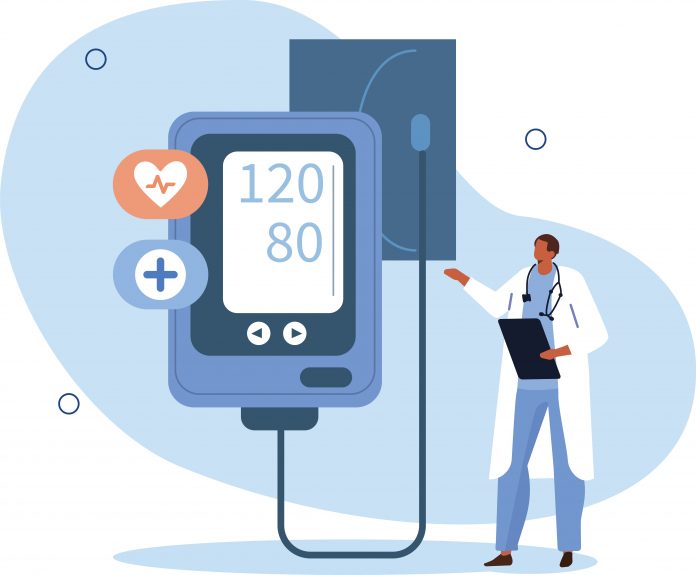
Researchers at the University of California San Diego have developed a wearable ultrasound patch that could transform how blood pressure is monitored. Published in Nature Biomedical Engineering, the study marks a significant advancement as the first wearable ultrasound sensor for blood pressure monitoring to undergo rigorous clinical validation, including tests on over 100 patients in real-world and clinical settings.
The patch, a small and stretchy device about the size of a postage stamp, adheres to the skin and provides continuous, noninvasive blood pressure monitoring deep within the body. Traditional blood pressure cuffs provide one-time measurements, while the clinical gold standard, an arterial line, is invasive, uncomfortable, and restricts patient mobility. The wearable patch offers a simpler, more comfortable alternative with real-time data comparable to both methods.
“Traditional blood pressure measurements with a cuff, which are limited to providing one-time blood pressure values, can miss critical patterns,” said Sai Zhou, the study’s co-first author. “Our wearable patch offers a continuous stream of blood pressure waveform data, allowing it to reveal detailed trends in blood pressure fluctuations.”
The patch works by transmitting ultrasound waves via an array of small piezoelectric transducers housed in a silicone elastomer. These waves track changes in the diameter of blood vessels, converting them into precise blood pressure values. Recent improvements to the device include packing transducers closer together for better coverage of clinically relevant arteries, such as the brachial and radial arteries, and adding a backing layer to reduce redundant vibrations, enhancing signal clarity and accuracy.
The researchers validated the patch in a comprehensive series of studies involving 117 participants, including patients in intensive care units and cardiac catheterization labs. Tests evaluated the patch’s performance across a wide range of activities, such as daily routines, posture changes, and stress-inducing tasks like mental arithmetic. In all scenarios, the patch demonstrated accuracy comparable to that of blood pressure cuffs and arterial lines.
“A big advance of this work is how thoroughly we validated this technology,” said Sheng Xu, a professor in the Aiiso Yufeng Li Family Department of Chemical and Nano Engineering at UC San Diego and the study’s senior author.
“Blood pressure can vary significantly based on factors like white coat syndrome, daily activities, or medication. That’s why it was so important for us to test this device in real-world and clinical settings.”
The patch’s ability to continuously monitor blood pressure was particularly impressive in intensive care patients, where results closely matched those from arterial lines. This capability positions the device as a noninvasive alternative for high-precision monitoring in critical care environments.
Looking ahead, the researchers plan to integrate machine learning to enhance the device’s capabilities further, including predictive analytics for personalized cardiovascular care. They are also developing a wireless, battery-powered version of the patch to facilitate long-term use and seamless integration with hospital systems. The team aims to conduct larger-scale clinical trials to support widespread adoption of the technology.









